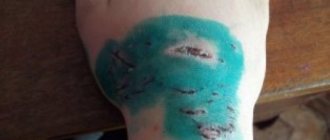- How is rabies transmitted in cats?
- Incubation period for rabies in cats
- Forms of rabies
- Diagnosis of rabies in cats
Rabies is a deadly infectious disease for all warm-blooded animals, including humans.
Its causative agent is a virus belonging to the rhabdovirus family, which, penetrating the body, causes severe damage to the brain and spinal cord, manifesting itself as symptom complexes characteristic of encephalomyelitis and polyneuritis. Only timely vaccination will help protect an animal from death. The rabies virus, having entered the body, spreads along centripetal nerve fibers to its final point of vital activity - the brain. The pathogen enters the saliva of infected cats from the central nervous system along the centrifugal nerve pathways.
There are two types of rabies:
- Forest, the distributors of which are wild animals - foxes, wolves, raccoons, arctic foxes, jackals, etc.
- Urban – the main threat in this case comes from homeless animals: cats and dogs, rodents (rats, mice).
About rabies
This is a very dangerous viral disease due to the fact that at first it is asymptomatic.
The first signs appear already in the last stages, when treatment becomes useless. In cats, the likelihood of contracting rabies is much higher than in dogs, since they are rarely given preventive vaccination, in the belief that pets are not at risk of this pathology. But rabies is not necessarily transmitted through a bite. A cat can become infected if it licks saliva from grass, shoes, or eats from an infected animal's unwashed bowl. The risk of infection for pets living outside the city increases even more. Rodents are often carriers of rabies. Cats are natural hunters and can become infected from the bite of a mouse, rat, or after eating them, as the virus penetrates the pet’s saliva.
All warm-blooded living organisms are susceptible to rabies. The disease is often acute and affects the central nervous system. The pathogen is released through saliva and quickly multiplies in nerve tissues. Infection occurs during a bite through wild or domestic animals. The cause is the Rabies . Cold and frost cannot destroy it. High temperatures and some disinfectants are harmful to it.
Signs of infection in people
Infection of the owner due to cat rabies can also have unpleasant consequences. In particular, you can understand that an infection has occurred due to a kitten bite by the following signs that appear some time after the incident:
- photophobia;
- aggressive behavior;
- hallucinations;
- speech disorders;
- muscle spasms and cramps;
- feeling of fear and panic;
- paralysis of limbs.
Despite the fact that cats rarely get rabies, the need for preventive measures does not disappear by itself. Only vaccination carried out at the required intervals can prevent the risk of disease or reduce its likelihood to a minimum. Neglecting rabies prevention can cost owners the life of their beloved pet.
Symptoms of rabies in cats
During the incubation period (this is the time the disease develops until the first symptoms) manifestations of rabies are not observed. Once in the body, the virus can remain at the site of the bite for several days. Then it begins to gradually move through the circulatory system, muscle fibers to the brain, central nervous system.
The duration of the incubation period is affected by the age of the pet, the number of bites, individual characteristics of the body, and the concentration of the pathogen:
- in kittens this period takes approximately 7 days, in adult pets – from 3 to 6 weeks;
- if the bite occurs in the area near the tail, the incubation period will be longer, if near the head it will be shorter;
- the asymptomatic period is sharply reduced with multiple punctures of the skin, due to which a large concentration of the virus enters the body.
At the end of the incubation period, the first signs of rabies appear. The appetite is disrupted, the cat refuses water, although it suffers from thirst, and becomes apathetic and lethargic. He is tormented by attacks of vomiting and diarrhea (usually with blood). Symptoms can easily be confused with signs of poisoning. But this is the initial stage of the disease, which is already dangerous for others.
| Symptoms | |
| Main | Additional |
|
|
Many manifestations are confused with signs of other diseases - epilepsy, stroke, poisoning, Aueszky's disease. Therefore, early diagnosis is difficult. Symptoms appear faster when the neck, muzzle, or head are bitten.
The first signs of rabies in cats
How to determine rabies if the first signs appear at least a week after the onset of infection? Animals become lethargic and lick the bite site. It is very itchy, so they constantly scratch it with their claws. However, the site of initial infection is not always visually determined. Punctures in the skin from the teeth may not be noticed if the cat was bitten by a small mouse.
The cat's behavior changes dramatically. For example, an unsociable person becomes affectionate, even intrusive. Good-natured ones suddenly begin to hiss, run away, hide, and more often show aggression. Since the pathogen affects the digestive organs along the way, nausea, vomiting, and diarrhea additionally appear.
The chewing and swallowing muscles do not function, so the pet refuses its usual food and swallows small inedible objects. When the front part of the brain is damaged, muscle tremors and loss of coordination appear.
Routes of infection
Routes of infection can be natural, when wild animals - raccoons, foxes, martens, wolves, arctic foxes - become carriers of the virus. In the city, rabies is transmitted mainly through stray dogs, cats, rats, and mice.
Feral or stray cats can become infected from the bite of an infected animal. Many people living outside the city catch rats and mice. After eating an infected rodent, the risk of infection increases. Even when a pet has only strangled a sick rat, its drool can end up in its mouth.
Domestic cats become infected primarily through the saliva of a sick animal. For example, during a fight. Bites are not always the cause. For a healthy cat to become infected, it is enough if infected saliva gets into its wound or if it eats from the bowl of a sick pet.
Forms of rabies
Rabies is divided into four types. They differ in manifestations and the speed of the disease, which is determined by the age of the pet. The younger he is, the faster he dies.
| Main types | Description |
| Violent (classical) | It occurs most often and is characterized by dramatic changes in behavior. Lasts 5-12 days. Furious rabies develops in stages: 1. Prodromal period (2-4 days). The cat is very excited, actively trying to attract attention. Then this state is replaced by lethargy and detachment. Appetite decreases and disappears. Instead of food, the cat swallows inedible objects. Nausea, diarrhea, and excessive salivation appear. The affected area becomes inflamed and itchy.2. Manic period (2-5 days). Symptoms get worse. Constantly dripping drool accumulates around the mouth. The lower jaw droops, hydrophobia appears due to spasms of the larynx (fear of choking). The animal hides, becomes aggressive - rushes at others, gets nervous from loud sounds. The look is cloudy, the eyes are squinting, the paws are gradually paralyzed.3. Depressive period (1-3 days). Paralysis covers the body, convulsions appear. Death occurs due to cardiac arrest, respiratory arrest, and severe exhaustion. The violent form is considered very dangerous. The cat loses his mind, stops recognizing his household, and tries to injure those he meets along the way. |
| Silent (paralytic) | Characterized by rapid development (3-5 days). The cat suddenly begins to cuddle obsessively. Then she becomes apathetic, loses her appetite, and fears of water and light appear. He hides and begins to avoid people. Complete paralysis develops from the head to the hind legs. The lower jaw hangs, the tongue falls out, breathing is difficult. A cough and profuse salivation appear. |
| Atypical | It is rare and can last for months. Manifestations of the pathology are weakly expressed, which makes diagnosis difficult. The active form alternates with periods of remission, but the stage of excitation does not occur. The pet’s gastrointestinal tract is disrupted. He does not eat, nausea, vomiting, diarrhea appears, and the stool is stained with blood. The body is severely depleted, the cat sleeps all the time, becomes lethargic and depressed. Convulsions occur periodically, then paralysis and death. |
Abortive is the rarest, least studied species. Signs of rabies in cats are the same as in the paralytic form, but sometimes the pathology follows an atypical or classic pattern. The difference is that during the development of paralysis, the symptoms suddenly disappear and the cat’s condition returns to normal. But after two weeks there is a sudden relapse. The disease develops rapidly, the pet dies in 2-4 days.
Routes of infection
The virus persists and spreads among wild animals. Most often, predators (martens, foxes, jackals, raccoon dogs, etc.) get sick and carry the infection. Small rodents practically do not get sick, but among epidemiologists there is a hypothetical assumption that they can be carriers of the virus. Populations of rats and mice of various species can be a natural reservoir of infection. Birds are not susceptible to the disease.
Considering the possible routes of infection, it is easy to imagine how a cat can become infected with rabies:
- directly from the rodent it hunts;
- when in contact with other animals that are already sick.
Domestic cats can get the virus from stray cats during a fight, or suffer from a sick dog or other inhabitant of urban or rural areas. When transporting pets to summer cottages, there is a risk of infection from residents of forest areas.
Domestic cats do not have innate immunity to rabies, and acquired immunity can only appear with annual vaccination. The procedure is carried out in any veterinary clinic. If the cat has not been vaccinated and has been in contact with a sick animal, the first symptoms will appear within about 1-2 months (in adults) or 5-7 days (in kittens). It is believed that symptoms occur most quickly with bites in areas with good innervation: head, paws, genitals. The incubation period may be longer if the animal is in good shape.
Rabies agent
The causative agent of rabies is Rabies , transmitted through saliva. It has a spherical shape (100-150 mm in diameter). Penetrating into the body, the pathogen strives for the brain, quickly moving through the nerve cells. Therefore, the location of the bite affects the rate of development of the disease and its manifestations.
In the external environment, the lethal agent is relatively stable. When frozen, it can be preserved for up to 4 months, survives among rotting tissues, and does not react to antibiotics. For Rabies, high temperatures are destructive (for example, at 50 degrees it is destroyed in an hour, at 70 - instantly), disinfectants (formalin, phenol, sublimate solution), ultraviolet radiation. From the central nervous system, pathogenic agents reach the salivary glands, where they begin to multiply.
Preventive measures
Cat owners are interested in how often to vaccinate their pet against rabies. Vaccination is the only way to protect a cat from infectious viral pathologies. It will prevent infection of people and animals. Cats are vaccinated against rabies in the following cases:
- if the animal has spent a long time outside the home;
- if you plan to export the cat to another country;
- if there are other pets living in the house who walk outside every day;
- if there are wild rodents (mice, rats) in the house.
A cat's first rabies vaccination is given at 3 months. The vaccine is valid for 12 months. Experts recommend vaccination annually. Breeding animals and pets participating in exhibitions must be vaccinated. Vaccination records are included in the cat's veterinary passport; the presence of stickers is mandatory.
Contraindications to vaccination:
- elevated temperature;
- hypersensitivity;
- untreated infectious pathologies;
- chronic diseases in the acute stage.
After vaccination, the animal is isolated. Quarantine after rabies vaccination in cats lasts 7-10 days. The reaction to the rabies vaccine is in most cases positive, and side effects do not occur often. Possible complications after vaccination include:
- allergic reactions;
- apathy;
- partial refusal of food.
For preventive purposes, domestic and imported vaccines are used. Their main differences are the type of virus presented. Rabies vaccines can be inactivated or live. Live vaccines quickly build immunity, have a high level of protection and low cost. The disadvantages of drugs of this type include complications that develop after the medication is introduced into the animal’s body.
They should not be used on nursing or pregnant cats. Experts prefer inactivated vaccines. On the day of vaccination, the veterinarian examines the cat, measures the temperature and asks the owner about possible complaints about the animal’s well-being. The choice of injection site depends on the type of vaccine: most often it is administered intramuscularly (in the thigh) or subcutaneously (scapula area). The volume of the medicine is 1 ml, which is equivalent to 1 dose.
Pathogenesis
Once inside the body, the virus penetrates connective and muscle tissues, then into nerve fibers. Then it enters the bloodstream, lymph, and reaches the spinal cord and brain. It accumulates in the salivary glands, where it begins to multiply rapidly. At the same time, it destroys nerve nodes and cells and moves to mucous surfaces.
Under the influence of the virus, non-purulent encephalitis develops in the brain, causing excessive excitability. Neurons begin to deteriorate, necrotic changes and paralysis appear. The cat's respiratory system fails, asphyxia and death occur.
The rate of development of the disease greatly depends on the location of the bite. The further it is from the head, the longer the incubation period. The age of the pet is also important - in kittens, elderly, sick animals, infection occurs more rapidly than in healthy ones. The duration of the incubation period is affected by the concentration of the virus, which increases with numerous bites. But the appearance of the first signs of infection always means the imminent death of the pet.
Main symptoms, diagnosis and treatment
The main symptoms of rabies in cats are excessive salivation, aggression alternating with attacks of impotence, fear of water and light. Paralysis gradually develops. Behavior changes, aggression occurs more often, the cat tries to grab the face. At first, the signs are absent or minor, similar to the manifestations of other health disorders.
The virus can only be detected after death. A cat's nerve cells will contain Babes Negri . An autopsy shows redness of the mucous membranes, erosions, ulcers, and blood vessels. Numerous hemorrhages are visible in the stomach, brain, and the spinal canal is filled with exudate.
Rabies cannot be detected using a blood or urine test - Rabies is not there. The only life-time way is to send the pet to a two-month quarantine. During this time he survives or dies. But even early diagnosis of the disease will not save your pet from death. After being bitten, people are given emergency vaccination within three days.
Initial stage of the disease
Symptoms do not appear immediately. A week, two or even a month may pass from the moment of the bite. If the bite was on the arm or upper body, symptoms will appear after 10-14 days. When bitten on the legs, the first signs of the disease may appear after one or two months. The incubation period for rabies in humans ranges from three days to three months.
The first symptoms are discomfort in the area of the bite (scratch). In some cases, suppuration and redness of the skin are observed. In addition, the patient may complain of:
- decreased appetite and weight loss;
- sleep disturbance and nightmares;
- development of apathy;
- low-grade fever.
If the bite was in the face, the patient is haunted by hallucinations. The pulse rate gradually increases, blood pressure rises, and anxiety appears.
Prevention, vaccinations
The risk of developing rabies can be reduced through preventive vaccinations. First, the vaccine is administered to a three-month-old kitten or after the appearance of the molars - at 7-8 months, then annually. Elderly people with poor health are vaccinated every 2 years. Vaccinations do not guarantee 100% protection, but they reduce the risk of infection by 99%.
There are drugs that provide immunity only to rabies. Others are complex, preventing the development of 3-4 dangerous diseases simultaneously. The most popular drugs for vaccination are Nobivak, Leukorifelin, Rabikan, Quadriket . They have a minimal set of side effects.
Vaccination is prohibited during pregnancy, immediately after lambing, in the presence of worms, injuries, and before teeth change. A week before, deworming is carried out.
The danger of rabies in humans after a cat bite
Rabies is transmitted to all warm-blooded organisms. The incubation period most often lasts from 7 days to 1-3 months, rarely – up to six months. The disease develops especially rapidly in young children. Cases have been recorded in which rabies manifested itself after several years. But this is rather an exception. Emergency vaccination carried out in the first three days after the bite can save you. If the injections are not given on time, then the same symptoms occur as in cats, then paralysis, coma, death.
Signs of rabies in a cat for humans
Symptoms of rabies in humans after a cat bite are similar to those of infected animals. At first the wound hurts and swells. Then the following appears:
- fears, phobias, depression;
- convulsive contractions of the respiratory and swallowing muscles (which means the pathogen has already reached the muscles);
- copious amounts of saliva;
- fear of water, light, drafts;
- heat;
- hallucinations;
- dilated pupils;
- cardiopalmus;
- protrusion of the eyeballs.
A person reacts painfully to any sounds, even a whisper. Aggressive towards other people, can cause injury to himself. When the pathogen reaches the brain, paralysis, coma, and death follow.
Rabies can be prevented by routine vaccination, but there is no cure. Only a person has a chance to survive if emergency assistance is provided within three days after the bite (from 6 to 40 injections are given). However, this also does not guarantee that Rabies will be destroyed and lives saved.
Excitation stage
The stage is characterized by increased sensitivity to external stimuli (light, smell, touch, sound) and fear of water. For example, the patient cannot even take a sip of water - convulsive contractions begin, even to the point of vomiting. As the disease progresses, convulsions occur even from the sound of pouring water. The patient's blood pressure rises, the heart rate increases, breathing becomes frequent and shallow, profuse sweating and drooling appear.
This stage is characterized by periods of excitement when the sick person cannot control himself. He becomes aggressive, tears his clothes, attacks people, and screams in a voice that is not his own. The attack is accompanied by aggressive hallucinations.
On our website Dobrobut.com you will find more information on this topic. By calling the above numbers, you can make an appointment with a doctor who will tell you when to do a blood test for rabies and what can alleviate the condition of an already sick person.











